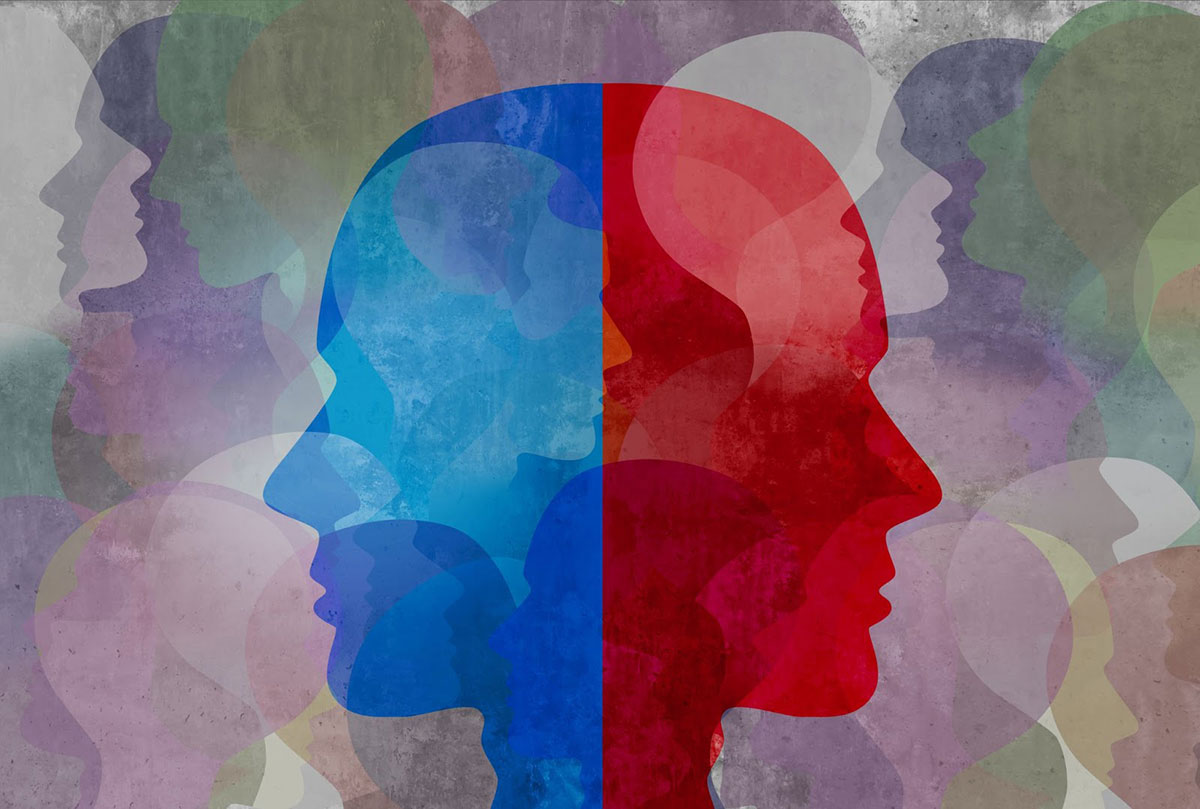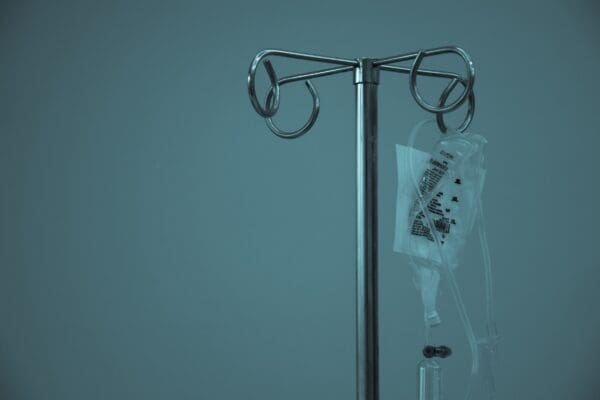Medical Editors: Dr. David Cox, PhD, ABPP and Medical Editor: Hilary Morris, MA, LPC
Do psychedelics work for PTSD?
What is PTSD?
The Diagnostic and Statistical Manual of Mental Disorders (5th ed; DSM-5; American Psychiatric Association, 2013) defines post-traumatic stress disorder (PTSD) as being exposed to actual or threatened death, serious injury, or sexual violence. According to the VA, “patients with PTSD may exhibit persistent reexperiencing of the traumatic event(s), persistent avoidance of stimuli associated with the trauma, numbing of general responsiveness (not present before the trauma), and persistent symptoms of increased arousal (not present before the trauma).” It is estimated that about 7.8% of Americans will experience PTSD at some point in their life.
Combat veterans return home from deployments and often develop PTSD. PTSD symptoms may also include reliving the initial traumatic experience in the form of nightmares, flashbacks, or invasive vivid memories. When in combat, veterans are in a prolonged state of hypervigilance and hyperarousal. Many of them must awaken from sleep abruptly to carry out their mission. This can lead to chronic changes in the brain, particularly the amygdala and limbic system. Basically, soldiers learn how to “turn on” to engage in battle, yet do not learn how to “turn off” when they return home. Their brains adapt to a prolonged state of hypervigilance, and they become more sensitized to evocative stimuli in their environment that mimic the initial incident.
Individuals with PTSD experience an increased number of perceived threats and therefore face off with fear regularly. Due to neurobiological changes in the brain, most people who suffer from PTSD have a persistent and overactive experience of “fight-or-flight response”, as well as an overactive releasing of cortisol. This repeated pattern becomes habitual and out of the control of the individual with PTSD.
What is dissociation?
Certain instances of PTSD involve dissociative responses. Two components of dissociation include depersonalization (feeling a sense of detachment from the body) and derealization (the feeling of being in a dreamlike state). Dissociation is a coping mechanism and aids individuals to be able to withstand their trauma in the event they are unable to escape the triggering situation. In addition to fight-or-flight, sometimes people “freeze.” Many individuals describe dissociation as “floating” outside of their bodies. Sometimes those with PTSD experience dissociative episodes, and “leave” their bodies when the hyperarousal levels exceed a point their bodies can’t handle. One study found a link between dissociative responses and suicidality.
PTSD treatment involves an understanding of dissociative episodes, precursors, and triggers to PTSD episodes, and veterans learn to connect to their emotional experience when they would normally dissociate. They slowly learn to sit with the feelings of panic, hyperarousal, and hypervigilance, response. They also begin to train their nervous system to down-regulate using desensitization methods.
What is a trigger?
Essentially, a trauma or PTSD response can be broken down into four elements: trigger (or stimulus), body-based (somatic) reaction, accompanying thoughts, emotions. An example is a trigger (hearing a loud noise), somatic response (chest tightening, heart racing), accompanying thoughts (“I am going to die”), and emotions (anxiety, fear). PTSD treatment works to understand triggering episodes and slowly disrupt the conditioned and patterned trauma response (in terms of cognitions, somatic responses, and cognitive patterns). It may seem counterintuitive, however healing trauma using desensitization approaches slowly increases the capacity of the individual to relive, reprocess, and release their trauma while cultivating a calm nervous system. Eye movement desensitization reprocessing (EMDR) uses bilateral stimulation while the client remembers the triggering memory to facilitate interhemispheric communication and reduce the automatic limbic response. Clients learn to down-regulate the automatic nature of the PTSD response.
How to treat PTSD?
Standard of care models suggest a combination of psychotherapy and medication in the treatment of PTSD. Psychotherapy models include cognitive behavioral therapy, stress inoculation therapy, and desensitization therapy using exposure therapy of eye movement desensitization reprocessing (EMDR). Many times, veterans become treatment-resistant to these approaches and many veterans look to suicide as a way to evade their continual distressing symptoms.
Organizations like the Invictus Project understand that veterans may require alternative approaches to healing. More and more non-profit organizations are providing more holistic and integrated treatment options including ketamine therapy, hyperbaric therapy, and hormone replacement therapy to veterans who have not reached desired outcomes using typical standard of care models.
PTSD and Psychedelic Treatments
MDMA and PTSD
MDMA has become a groundbreaking option for the treatment of PTSD. Additional research has shown 67% of participants no longer meet DSM-5 criteria for PTSD 1 year after treatment. MDMA is expected to gain approval in the treatment of PTSD by 2023.
One of the reasons why MDMA-assisted psychotherapy may be beneficial for PTSD is because the benefits of MDMA such as decreased anxiety, uplifted mood, increased relaxation, and decreased defensiveness may allow a patient to revisit traumatic memories and work through them without fear, trauma, and anxiety prohibiting progress or without becoming too overwhelmed to move further. By decreasing the difficulty of experiencing traumatic memories, MDMA may also benefit the bond between patient and therapist which assists in the treatment process.
Ketamine and PTSD
Ketamine therapy can help veterans struggling with both treatment-resistant depression and also symptoms of PTSD. Ketamine can rapidly down-regulate the brain’s default mode network and act as an “off switch” for the amygdala (the organ related to the “fight-or-flight” center). It can also be a gentle agent and assist in trauma processing and resolution by bringing up repressed or traumatic memories so the body is able to process and release them.
Somatic theories of trauma and the polyvagal theory argue trauma networks exist in the brain and in the body and therefore healing trauma may also require a somatic evidence-based therapy, like EMDR. Psychedelic therapy can also help clients to bypass cortical processing and enter into the space of somatic processing. Somatic processing acts as a method to help desensitize clients to the initial traumatic event. In other words, it helps decrease the emotional “charge” associated with the event, and in doing so helps to unpair the stimulus (hearing a loud noise, for example) from the response (panic, anxiety, hyperventilating). Psychedelic approaches with a somatic practitioner can help veterans tune into the “wisdom” within their bodies.
Ibogaine and PTSD
There are anecdotal reports of people seeking out ibogaine for PTSD. Some people report that ibogaine allowed them to reprocess traumatic memories and find insight into the reasons they sought out treatment. While most of what we know about ibogaine and PTSD is anecdotal, we have some preliminary findings and limited evidence for why it may be beneficial for those diagnosed with PTSD.
A 2020 study on US Special Operation Forces Veterans diagnosed with PTSD and cognitive impairment surveyed 51 veterans who were treated with ibogaine followed by 5-methoxy-N,N-dimethyltryptamine (5-meo-dmt) at an ibogaine clinic in Mexico from 2017-2019. Results indicated a significant reduction in suicidal ideation, symptoms of PTSD, cognitive impairment, depression, and anxiety. Participants also rated the experience as spiritually significant and psychologically insightful. These findings are regarded as preliminary due to the limitations of the survey.
PTSD often disrupts restful sleep, including rapid-eye-movement (REM). Ibogaine is an oneirogen, meaning it stimulates a dream-like state. In the case of ibogaine, REM has been observed in higher doses instigated by noribogaine catalyzing many neurotransmitters and also creating plasticity between the brainstem and the amygdala. REM allows for the consolidation of memories and also emotional regulation. Dr. Carl M. Anderson, a neuroscientist with experience at Harvard and CooperRiis, has proposed a theory that the oneiric state ibogaine instigates may be therapeutic for people struggling with conditions such as PTSD.
While more research is needed to reproduce the anecdotal and observational findings of PTSD and ibogaine, the results are staggering enough to warrant more research into ibogaine and PTSD.
Ibogaine and Dual Diagnosis
Substance use disorder is a common comorbidity with individuals diagnosed with PTSD. One study suggests that 46.4% of individuals with PTSD also met the requirements for substance use disorder. People with PTSD were 14 times more likely to also have substance use disorder. The variations in the statistics are most likely due to the type of people surveyed, treatment versus non-treatment seeking.
Veterans are at a higher rate of being predisposed to a dual diagnosis of PTSD and substance use disorder. The same study estimates that the severity of combat witnessed is directly tied to alcohol and substance use disorder. Veterans can be up to 93% more likely to abuse alcohol upon returning home depending on combat witnessed. Veterans also have a high comorbidity rate of PTSD and substance use disorder.
Ibogaine has been studied for its positive relationship with treating dependence to alcohol, opioids, and stimulants. In 2020, UC Davis released a study on a synthetic analog of ibogaine called TBG. After a single administration of TBG mice cut back on self-administration of alcohol and rats cut back their opiate use. TBG also stimulated the new formation of dendrites and dendritic spines in rat nerve cells. TBG was shown to possibly be helpful with PTSD, addiction, depression, and anxiety by changing neuron structure in the areas of the brain related to these diagnoses.
While there is still a long way to go to declare ibogaine as a treatment for PTSD and other psychological disorders, ibogaine or synthetic ibogaine analogs are showing promise in the idea that we may have a substance that can treat more than one diagnosis at once.
Healing and Hope for PTSD
Research shows that 9% of combat veterans develop PTSD immediately after returning from deployment and this number increases to 31% one year after deployment. The complex and distressing symptom presentation makes it difficult for veterans to seek help. Traditional treatment approaches are helpful yet some veterans require alternative holistic options which creates curiosity about somatic and psychedelic approaches.
Marcus and Amber Capone launched Vets Exploring Treatment Options in 2019 following Marcus Capone’s transformation after he sought out ibogaine for his PTSD and substance use disorder. The non-profit attempts to fund other veterans who want to seek out alternative psychedelic treatments and integration services through “healing grants”. They support veterans seeking psychedelic treatments such as ketamine, ibogaine, psilocybin, 5-meO-DMT, and ayahuasca. Currently, their efforts usually require sending veterans overseas for psychedelic treatment due to issues of legality in the United States. However, current decriminalization initiatives and clinical trials are creating a pathway to hope for those struggling with this condition.
To learn more about gaining access to legal resources for alternative treatment methods, please click here to begin connecting with practitioners in your area.







